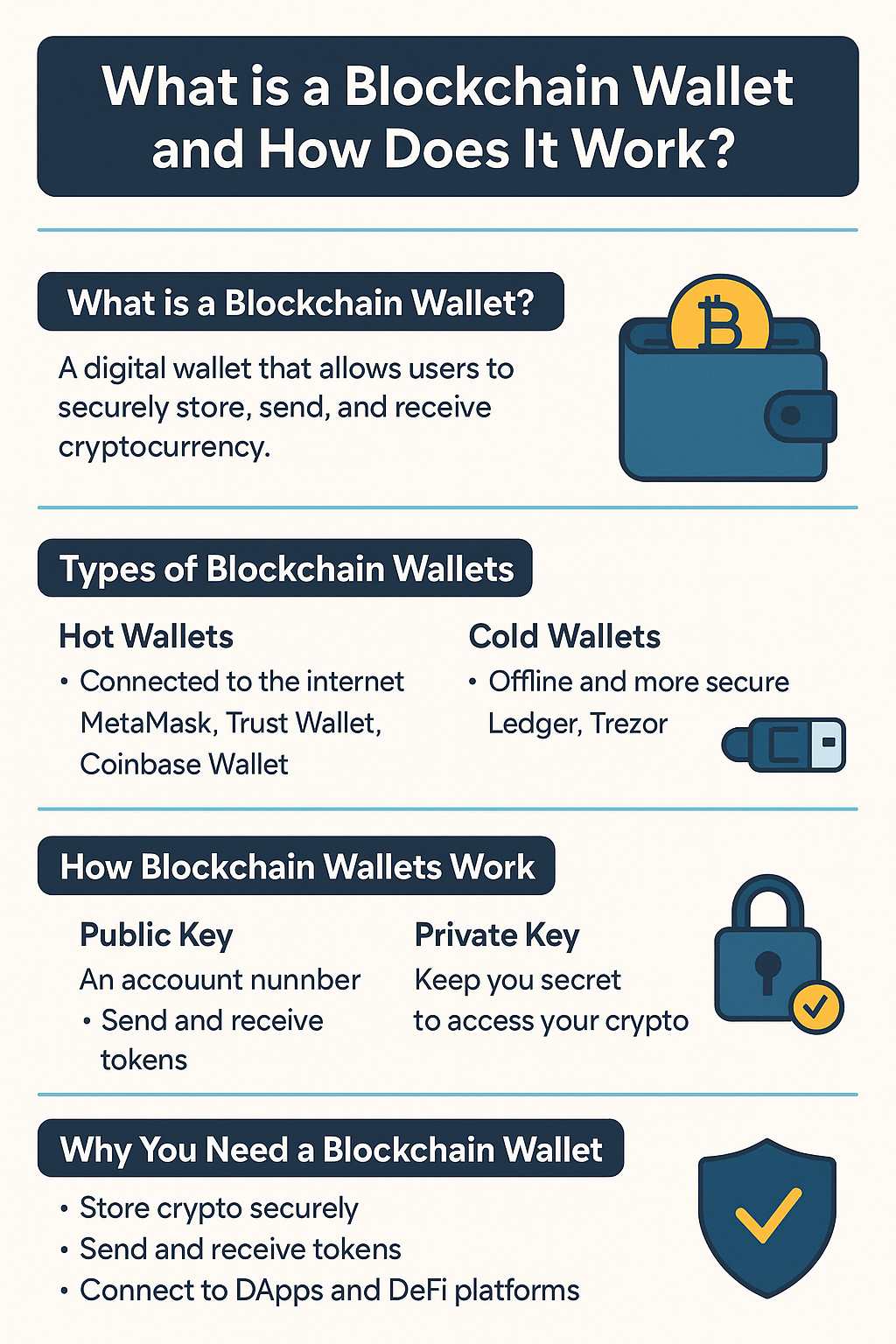What is a Blockchain Wallet and How Does It Work?Your Digital Key to the Crypto World
If you’re stepping into the world of cryptocurrencies, the first thing you’ll need is a blockchain wallet. It’s the gateway to storing, sending, and receiving digital assets like Bitcoin, Ethereum, and many others.
But what exactly is a blockchain wallet, and how does it work?
1. What is a Blockchain Wallet?
A blockchain wallet is a digital application or device that allows you to manage your cryptocurrency securely. It doesn’t physically “hold” your coins; instead, it stores the private keys that give you access to your crypto stored on the blockchain.
2. Types of Blockchain Wallets
- Hot Wallets: Connected to the internet
- Examples: MetaMask, Trust Wallet, Coinbase Wallet
- Great for daily use, but more exposed to hacks
- Cold Wallets: Offline and more secure
- Examples: Ledger, Trezor (hardware wallets)
- Ideal for long-term storage
3. How Blockchain Wallets Work
Each wallet has:
- Public Key: Like an account number — share this to receive crypto
- Private Key: Like a password — keep this secret to access your crypto
Transactions are signed using the private key and then verified on the blockchain using the public key.
4. Why You Need a Blockchain Wallet
- Store crypto securely
- Send and receive tokens
- Connect to DApps and DeFi platforms
- Participate in staking or yield farming
5. Tips for Wallet Safety
- Never share your private key or seed phrase
- Use 2FA when available
- Back up your seed phrase offline
- Use cold storage for large amounts
Conclusion
A blockchain wallet is essential for anyone in the crypto space. Whether you’re trading, investing, or exploring Web3, understanding how wallets work ensures your assets are safe and accessible.
Take a Mental Break with Flutter Bees
Tired of checking wallet balances and tracking tokens?
Relax with the Flutter Bees
- Tap to earn in the Clicker Game
- Protect your hive in the Bee Hive Defense Game
- Watching the bees boosts your points and helps you finish game tasks






Post Comment